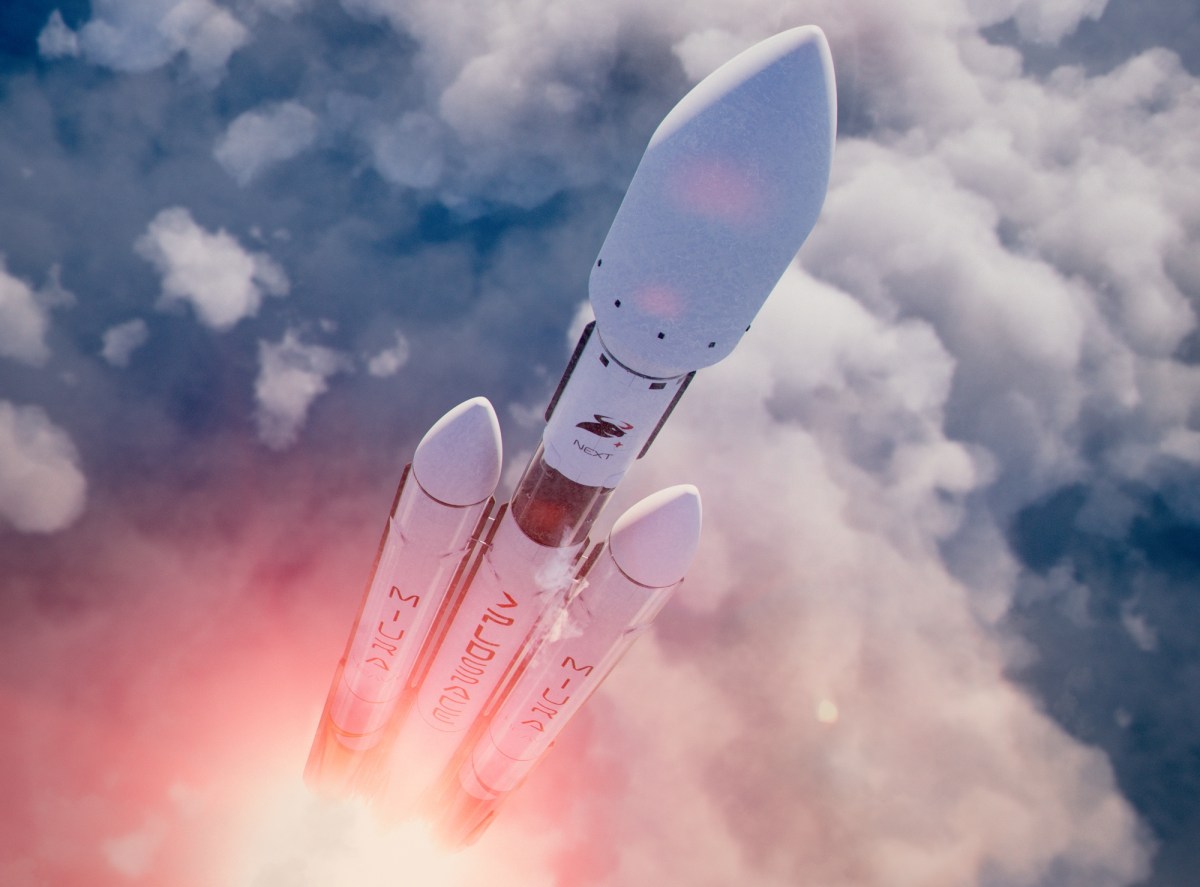ORLANDO, Fla. — Spanish startup PLD Space, currently developing a small launch vehicle, has outlined plans to work on progressively larger, reusable rockets as well as a crewed spacecraft.
The company pitched its long-term ambitions to be a leading European and global spaceflight company during an event at its Elche, Spain, facilities Oct. 7, a year after the company launched its first Miura 1 suborbital rocket.
The current focus of PLD Space is on the Miura 5, a small launch vehicle capable of placing about 500 kilograms into a sun-synchronous orbit. The company is seeking to have the first Miura 5 on the pad at the Guiana Space Center by the end of 2025, with a launch to follow in January or February 2026, said Raúl Verdú, chief business development officer and co-founder of PLD Space, during the presentation.
While the Miura 5 initial launches will be expendable, PLD Space seeks to recover and reuse the first stage. That initially involved using parachutes and recovering the stage after splashing down in the ocean, but the company now says it is pursuing propulsive landing of the stage, the same approach used by SpaceX’s Falcon 9.
In a separate interview, Raúl Torres, chief executive of PLD Space, said the company concluded that propulsive landing is the only way to achieve reusability. “If you see an airplane from Boeing or an airplane from Airbus, the way of landing is the same,” he said. “We reached the conclusion that the only way to make a stage reusable is bringing it back in the same fashion that SpaceX or Blue Origin is doing.”
The company will gradually implement reusability, he said, with the first reused vehicle flying around 2028. Introducing reusability will double the profitability of the vehicle, he argued, although the company didn’t disclose what effect it would have on the rocket’s payload capacity.
The company also introduced plans for a larger launch vehicle, called Miura Next. The baseline vehicle will be a medium-class rocket with a payload of up to 13,580 kilograms to an orbit like that of the International Space Station and nearly 4,600 kilograms to geostationary transfer orbit (GTO). Those payloads would be reduced if the first stage is landed either on a barge downrange or back at the launch site.
One derivative vehicle, the Miura Next Heavy, would use two additional first stages as side boosters, analogous to the Falcon Heavy. In expendable mode it could place up to 36,000 kilograms into an ISS reference orbit, decreasing to 19,500 kilograms if the side boosters are landed back at the launch site.
A second derivative, Miura Next Super Heavy, would use four first stages as side boosters, arranged in a cross formation, an approach Torres likened to Russia’s Angara A5 launch vehicle. That would place 53,000 kilograms into an ISS reference orbit, or 13,660 kilograms into a Mars injection trajectory, in fully expendable mode.
The Miura Next Heavy, Torres said in the interview, “is the most commercially attractive for big GTO satellites,” with a capacity of 7,160 kilograms to GTO when the side boosters are recovered. The Super Heavy version, he said, is intended more for interplanetary missions. “We are bringing a huge quantity of payload to the moon and Mars.” The company is projecting a first launch of Miura Next in 2030, with the larger versions to follow by 2033.
In addition to the launch vehicle projects, PLD Space said it is working on a crewed spacecraft called Lince. The capsule would be able to carry four to five people to low Earth orbit. The company unveiled a mockup of the capsule at the event.
A model of PLD Space’s Lince (“Lynx”) crewed spacecraft. Credit: PLD Space“This is not a cartoon or a plastic capsule. It is a real engineering model,” Torres said of the capsule model. PLD Space had been working on it for the last year as a secret project even within the company, with only about 40 of its more than 250 employees aware of it.
PLD Space is planning a first flight of Lince in 2030, an uncrewed orbital flight launching on Miura Next that will spend three days in orbit before splashing down in the Atlantic Ocean or Mediterranean Sea. The company is planning a drop test of the capsule module as soon as next year to test parachute and recovery technologies. It will also conduct suborbital tests of Lince using the first stage of the Miura 5.
One obstacle for the company’s ambitions, beyond technical challenges, is funding. The company has raised 155 million euros ($170 million), enough for development of the Miura 5. Torres said the company is working on financial models for the next decade, and estimated developing Miura Next and the first version of Lince to cost about 700 million euros.
Investors, he said, asked if PLD Space should pursue other projects, like orbital transfer vehicles or satellite constellations. “Those are made by others. We don’t want to compete in those markets,” he said. “We want to enter into what we consider will be the big challenge or the big need in the future.”
Torres added that the company is not looking to European governments to fund development of the rockets and spacecraft, but hopes they will buy services. “We don’t want money for development. We just want contracts.”
The company’s move into larger launch vehicles, though, moves beyond strictly commercial calculations into geopolitical ones, he argued, which put Europe at a disadvantage to the United States and China. “We have our Ariane 6 and, what next? Nothing,” he said. “What we are saying that at PLD we have a plan to cover that. There’s a plan to, in the future, have the same infrastructure as others.”
